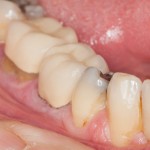
There are a wide range of dental adhesive systems on the market with any variants being introduced without clinical the validation. 2-hydroxyethyl methacrylate (HEMA) it Is one of the most commonly used. Because of its high hydrophilicity It was introduced to improve the wettability and diffusion into demineralised collagen fibrils. However, over time this hydrophilicity leads to increased water uptake resulting in hydrolytic degradation of the adhesive interface. As a result, manufacturers have developed HEMA free adhesives although the influence on HEMA on clinical performance is still a matter of debate.
The aim of this review was to verify whether the presence of the monomer HEMA in the formulation of adhesive systems has an influence on the clinical performance of non-carious cervical lesion (NCCL) restorations.
Methods
Searches were conducted in the Medline/PubMed, Web of Science, Open Grey, Scopus, and Cochrane Library with no restrictions on dates or language. Randomised controlled clinical trials (RCTs) comparing the effectiveness of HEMA-free and HEMA-containing adhesive systems in NCCL restorations were considered.
Two reviewers classified the included studies and data was extracted. Risk of bias was assessed independently by two reviewers using the Cochrane tool. Meta-analysis was undertaken using ‘low and unclear risk of bias’ studies. The overall effect (clinical performance) as well as the main parameters (retention [RE], marginal adaptation [MA], marginal discoloration [MD], caries [CA], and postoperative sensitivity [POS]) were analysed.
Results
- 22 studies were included.
- 13 studies were considered to be at low risk of bias, 9 at unclear risk.
- The number of participants ranged from 11-124 and the duration of studies from 12 months to 13 years.
- 30 different adhesive systems were tested.
- No significant statistical difference was found between the clinical performances of HEMA-free and HEMA-containing adhesive systems for the parameters analysed.
| HEMA-free Failures/Restorations | HEMA-containing Failures/Restorations | Risk Difference
(95%CI) |
|
| Retention | 160/840 | 131/864 | 0.03 (-0.01, 0.07) |
| Marginal adaptation | 22/577 | 35/621 | -0.01 (-0.04, 0.01) |
| Marginal discoloration | 32/584 | 20/626 | 0.02 (-0.01, 0.04) |
| Caries | 2/554 | 0/594 | 0.00 (-0.01, 0.01) |
| Postoperative sensitivity | 9/554 | 11/597 | 0.00 (-0.02, 0.01) |
Conclusions
The authors concluded: –
Although there are some criticisms regarding the high hydrophilicity of HEMA increasing the interface degradation, one may conclude that HEMA-free adhesive systems do not have better clinical performance of the NCCL restorations than HEMA-containing systems with regard to these outcomes: RE, marginal staining and degradation, secondary CA, and POS.
Comments
The authors have performed and extensive search to identify relevant studies. Strict inclusion and exclusion criteria have led to only unclear and low risk studies being included. A wider range of adhesive systems were included and as the authors point out a majority of the studies were conducted in a University setting which may have implications when translating the findings to the primary care setting. The included studies covered a wide range of follow up periods although the authors’ note in their discussion that analyses of short term ( 1-3yrs) medium and long-term follow up suggest that this did not affect the overall findings of no difference between HEMA-free and HEMA-containing systems.
Links
Primary Paper
da Silva TSP, de Castro RF, Magno MB, Maia LC, Silva E Souza MHD Júnior. Do HEMA-free adhesive systems have better clinical performance than HEMA-containing systems in noncarious cervical lesions? A systematic review and meta-analysis. J Dent. 2018 Jul;74:1-14. doi: 10.1016/j.jdent.2018.04.005. Epub 2018 Apr 9.Review. PubMed PMID: 29649505.
Original review protocol on PROSPERO
